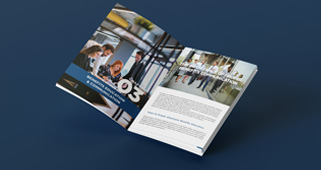Perhaps you operate a company and you’re employing someone who is on SSI/SSDI (Supplemental Security Income and Social Security Disability Insurance, respectively) or Medicaid benefits. As an employer, especially if you’re more HR-savvy, you’re aware that the income they receive from you has a direct impact on whether or not they can continue to receive disability benefits. If they work too many hours for you or earn too much, they’re no longer able to receive these benefits. For many of them, they need benefits from Medicaid, etc., in order to enjoy a positive, independent lifestyle.
Disability Benefits
Perhaps you have a degenerative disease that has been slowly progressing and making life more difficult. Perhaps you were in an unfortunate split-second circumstance, like a car accident or falling down a flight of steps. Either way, if you’re temporarily or permanently disabled, you’re eligible to receive government benefits to help supplement your income.
Here are a few notes supplemented from the Social Security Administration website:
The Social Security and Supplemental Security Income disability programs are the most significant of multiple Federal programs that offer help to those with disabilities. Both of these programs are unique in several ways, but both are managed by the Social Security Administration and only those who have a disability and meet particular health criteria are able to receive benefits from either of these programs.
Social Security Disability Insurance offers financial help to an individual and particular members of their family if they are considered “insured individuals,” meaning that they have spent enough time in the workforce and contributed l Social Security taxes over the years.
Supplemental Security Income offers financial payments based on demonstrated need.
To be able to qualify for disability payments, an individual must be physically incapable of engaging in any form of “substantial gainful activity” (SGA). An individual who is collecting more than a particular monthly income (outside of any work costs related to their impairment) is generally regarded to be participating in SGA. The income they receive monthly, which is counted as SGA, is dependent upon their particular type of disability. The Social Security Act sanctions a greater SGA payment for legally blind people; Federal regulations stipulate a lesser SGA income for people who are not blind.”
Income and Asset Limits for SSI Disability Eligibility
What have been the disability income limits over the last two years?
First, let’s look at assets.
In 2021, to qualify for SSI, a disabled individual would have had to have very limited income and very minimal assets. The Social Security Administration would have required SSI recipients to possess no more than $2,000 in assets (single person), and no more than $3,000 for a couple.
In 2021, the very minimum income limit for SSI was the federal benefit rate (FBR), which stood at $794 per month for a single individual, or $9,528 annually, and $1,191 per month for a couple, or $14,292 annually. In 2021, for those who were engaged in Substantial Gainful Activity (SGA), such as working in a restaurant, the monthly income limit was $1,310.
As of 2022, the monthly income limit for those engaged in Substantial Gainful Activity has increased to $1,350.
Supplemental Security Income Payments
In 2022, Social Security benefits and Supplemental Security Income (SSI) payments had an across-the-board increase of 5.9%. This has meant that greater than 70 million Americans have seen an increase in their benefit payments. This has mostly been a product of the federal response to inflation and higher costs of living.
The Social Security Administration explains this in more detail.
Since 1975, Social Security’s general benefit raises have been based on overall expansions in the cost of living, as measured by the Consumer Price Index. These increases are sometimes called Cost-Of-Living Adjustments, otherwise known as “COLAs.” The Social Security Administration levied a 5.9-percent COLA on October 13, 2021, and will announce the next COLA in October of 2022.
The monthly Federal limits for 2022 are $841 for a single qualified person, $1,261 for a qualified individual with a qualified spouse, and $421 for what is considered an “essential” person, or someone who is a caretaker for a recipient of benefits.
As a note, in order to be eligible for both SSI (supplemental security income) as well as SSDI, a disabled person must not only be considered disabled according to the standards of disability of the Social Security Administration (SSA), but also their income and resources must be below a certain threshold even after the SSDI benefits have been collected by them.
What Does This Mean for Individuals and Businesses?
For individuals who are on disability, the general benefit they’ll receive is that they won’t have to worry quite as much about working too many hours each month in order to still qualify for disability benefits. Likewise, they’ll be able to experience an almost 6% increase in benefits reflecting the increased cost of living and inflation of 2022, which will likely not contract much as the year progresses.
More practically, this means that people on disability will have more opportunities than before to still do dignifying and meaningful work and make a living while living a life of independence, and not having to miss out on as many work opportunities as before. For families with a disabled family member or a disabled child, the overall increases for the income and benefit thresholds will give them more flexibility as they plan out their lifestyles and take care of what’s needed.
For employers, the increases to both incomes and benefits will mean that they will need to work closely with their human resources departments to accommodate more employees who want to work and want to retain their benefits, they will have more freedom to employ these employees for more hours each month, which cumulatively will add up on their payroll, so important considerations will need to be made.
In addition, human resources departments will need to work closely with federal and state governments to accommodate and adjust for benefits, meaning making sure to plan their budgets accordingly, accommodating new hires with disabilities, and more. For some employers this might mean a small reallocation of funds and changing certain employment priorities.
All in all, the net result will be a positive one, for families and employers alike who want to work with motivated, passionate people!
To learn more about how to adjust to the changing landscape of disability payments, connect with Benely.






